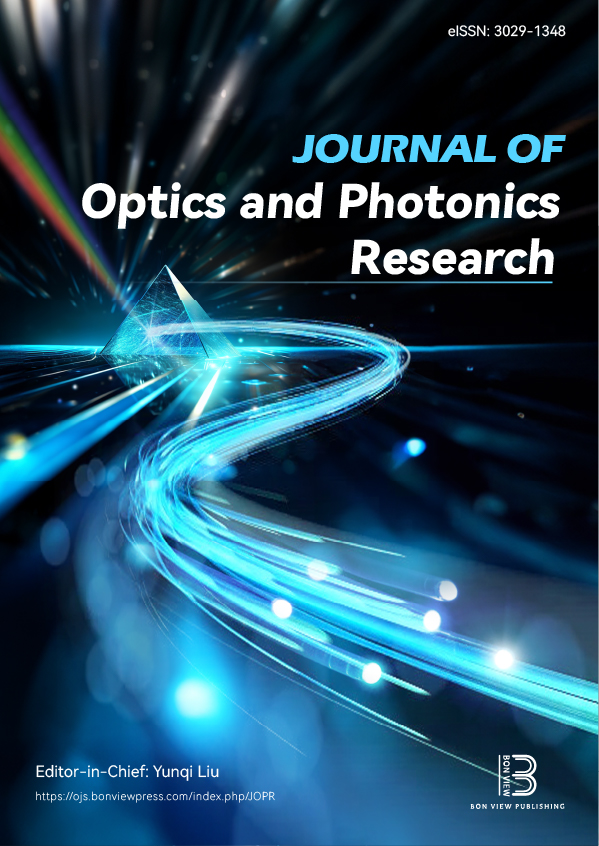High-Temperature Sensing with Iron-Ceramic Enhanced Fiber Bragg Grating Sensors: Encapsulation Strategies and Concentration Dependencies
DOI:
https://doi.org/10.47852/bonviewJOPR42023202Keywords:
type-I FBG(fiber Bragg grating), temperature sensitivity, temporal response, iron fillings, wavelength driftAbstract
This research article primarily aims to enable type-I FBG(fiber Bragg grating) for high-temperature sensing and to explore the influence of varying concentrations of iron fillings in the ceramic on the sensor's sensitivity and response time. A set of six identical probes were fabricated, each with a different iron filling concentration ranging from 0% to 50%. Increasing the iron filling concentration from 0% to 50% enhanced the temperature sensitivity of the probe from 14.08±0.24 pm/°C to 14.67±0.17 pm/°C. To evaluate the response time, the probes were subjected to an abrupt heating process from 27 °C to 700 °C, and the duration was measured. The response time improved from 270 seconds to 180 seconds, representing a 33.33% improvement, as the iron filling concentration increased from 0% to 50%. Beyond a 40% concentration, both the temperature sensitivity and response time reached saturation. The lifetime of the optimized probe with a 40% iron filling concentration is estimated to be 4.46 years. During repeated exposures to high temperatures, no permanent drift in its Bragg wavelength was observed, and its repeatability during a heating-cooling cycle exhibited hysteresis of less than 1%.
Received: 23 April 2024 | Revised: 30 June 2024 | Accepted: 18 October 2024
Conflicts of Interest
The authors declare that they have no conflicts of interest to this work.
Data Availability Statement
The data that support the findings of this study are available within the manuscript.
Author Contribution Statement
Raja Yasir Mehmood Khan: Conceptualization, Methodology, Software, Validation, Formal analysis, Investigation, Resources, Writing – original draft, Visualization. Rahim Ullah: Conceptualization, Validation, Resources, Data curation, Writing – original draft. Muhammad Faisal: Conceptualization, Validation, Resources, Data curation, Writing – review & editing, Visualization, Supervision, Project administration.
Downloads
Published
Issue
Section
License
Copyright (c) 2024 Authors

This work is licensed under a Creative Commons Attribution 4.0 International License.


